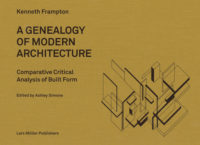European Lessons for Living
This handsome and valuable compendium of social housing projects in Europe is actually three books: a chronological presentation of 10 projects tracing the development of architectural concepts for collective housing from 1919 to about 1970; a superlative example of how well-organized and stunning graphics can allow for comparisons between projects; and a manifesto for promoting humane high-density living.

The authors, who are also the publishers, are members of a group formed in Spain in 1992 to promote architecturally distinguished high-density housing. In this book, they “tell 10 stories” so as not to allow “these works and their architects to go unnoticed by recent generations,” selecting the projects “as one chooses one's friends. Faults and all, they make everything worthwhile.”
Each project occupies a chapter that begins with a brief description, the “characters” involved (architect, collaborators, influences, politicians or administrators affecting the final outcome) and “references” (other earlier or contemporaneous projects treating similar problems). The projects are then presented in a consistent graphic format covering almost every scale, from the overall layout to detailed unit plans and rendered isometrics. Historic and construction photos and other archival images place each work in its time, while recent color photographs give a good sense of the experience of living in the eight surviving ones.
The examples range chronologically from the 1919-22 Justus Van Effen complex in Rotterdam by Michiel Brinkman—a courtyard project with a “street in the air”—to the 1970-75 Jeanne Hachette complex in Paris by the Communist architect Jean Renaidie—a Habitat-like structure with a terrace for each unit. Of special interest to me were the chapters on the 1955-83 Barbican project in London (described by the authors as “an exquisite ghetto” for the wealthy) and Ralph Erskine's 1969-82 Byker Regeneration in the UK (which had community participation built into its design process).
The authors are frank about the social outcomes of these projects and how economic, political, and social forces ultimately affected or overwhelmed them. Erskine's was damaged by poor maintenance, and, most tragically, the 1931-34 Cité de la Muette in Paris (an early example of industrialized high-rise construction) was used in 1942 to house 76,000 French Jews being deported to extermination camps and was subsequently demolished.
10 Stories is a valuable reference, a condensed history of collective housing, and a demonstration of outstanding graphics and commentary. While there are no American examples, I was struck by how many of the projects are part of my generation's collective memory, and what a debt my firm's Via Verde project (designed with Grimshaw) owes to its predecessors. This book is, ultimately, a paean to architects who labored in search of that essential goal still beyond our reach: “a home for everyone, affordable to everyone.”






Post a comment to this article
Report Abusive Comment